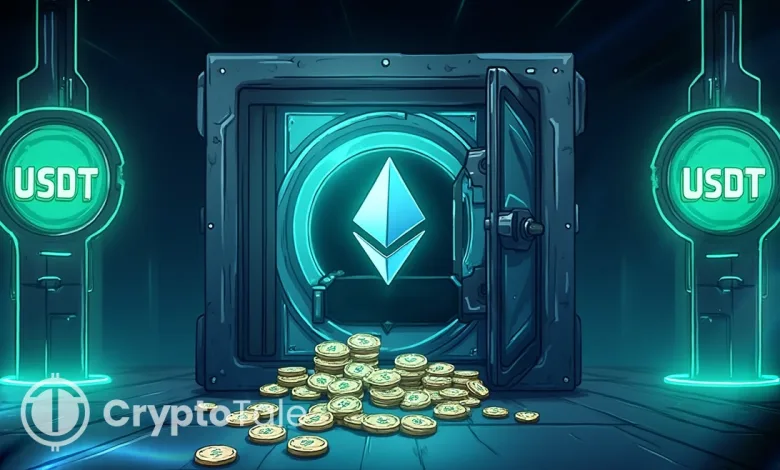Ethereum Whale Deposits $500M USDT Ahead of Stable Launch

- An Ethereum whale deposited $500M USDT 22 minutes before Stable’s official announcement.
- The wallet collateralized 300,000 ETH on Aave, accounting for 64.5% of total Stable deposits.
- The incident renewed debate over fairness and insider access in Ethereum’s DeFi ecosystem.
Ethereum’s decentralized finance community is facing fresh controversy after a massive on-chain transaction raised questions about insider access. An Ethereum whale, identified as Ethereum OG, moved $500 million USDT into Stable’s vaults minutes before its official announcement. On-chain data from Lookonchain revealed that the transaction came from an address holding 736,000 ETH, worth roughly $2.92 billion.
The whale collateralized 300,000 ETH on Aave to borrow the USDT, representing 64.5% of total deposits in Stable’s $775 million pool. The deposit occurred at 8:48 a.m. Beijing time, nearly 22 minutes before Stable announced its pre-deposit phase at 9:10 a.m. The timing has raised eyebrows in the crypto community, with many calling it a clear case of “rat trading”, a term used for privileged pre-access to token launches.
Community Questions Fairness and Transparency
Stable’s pre-deposit allocation sold out within seconds of its public launch, sparking frustration among retail participants. On-chain analysts estimate that more than 70% of total deposits were made before the official announcement. Many community members argue that large on-chain players may have received advance information about the event.
Stable, a Layer-1 project built around its new vault-based ecosystem, attracted massive attention during its first phase. The $825 million allocation cap was reached almost instantly, leaving smaller investors without a chance to participate. Critics have urged the project to release detailed transaction logs to clarify whether certain addresses gained early access.
Although Stable has not issued an official response, the incident has already drawn comparisons to earlier DeFi controversies involving early vault access and pre-mined tokens. Some observers view this as a recurring pattern that undermines trust in decentralized finance.
Arkham and Nansen, two on-chain data platforms, have joined the investigation and are monitoring the whale’s Aave borrowing transaction and the vault interactions that followed. The address is regarded as one of Ethereum’s oldest and most valuable users, having gone live in 2015. Its resurgence has sparked a fresh discussion about ethics and transparency in decentralized launches.
ETH Price Holds Firm Amid Whale Movements
Ethereum’s price has remained steady above $3,900 despite the controversy, having earlier in the week briefly touched $4,100. After a brief test of resistance, the asset returned to its current range. For most of the week, ETH has been consolidating below the psychological $4,000 mark.
Technical patterns show an ascending wedge forming, which could determine short-term direction. A breakout above $4,100 might open a path toward $4,500 and above. On the other hand, a decline below $3,700 might trigger a more significant correction toward $3,400.
Related: Ethereum Dev Claims Vitalik’s Circle Controls Ethereum Governance
Institutional borrowing and whale activity indicate ongoing faith in Ethereum’s long-term stability despite the current volatility. Wallets with 10,000–100,000 ETH have been steadily accumulating, according to Santiment data. However, smaller holders have been reducing their positions by nearly 140,000 ETH over the past week.
Still, Ethereum’s technical setup remains structurally bullish. Ethereum’s medium-term upward trajectory is strengthened by the recent surge, which turns $3,800 into new support.




